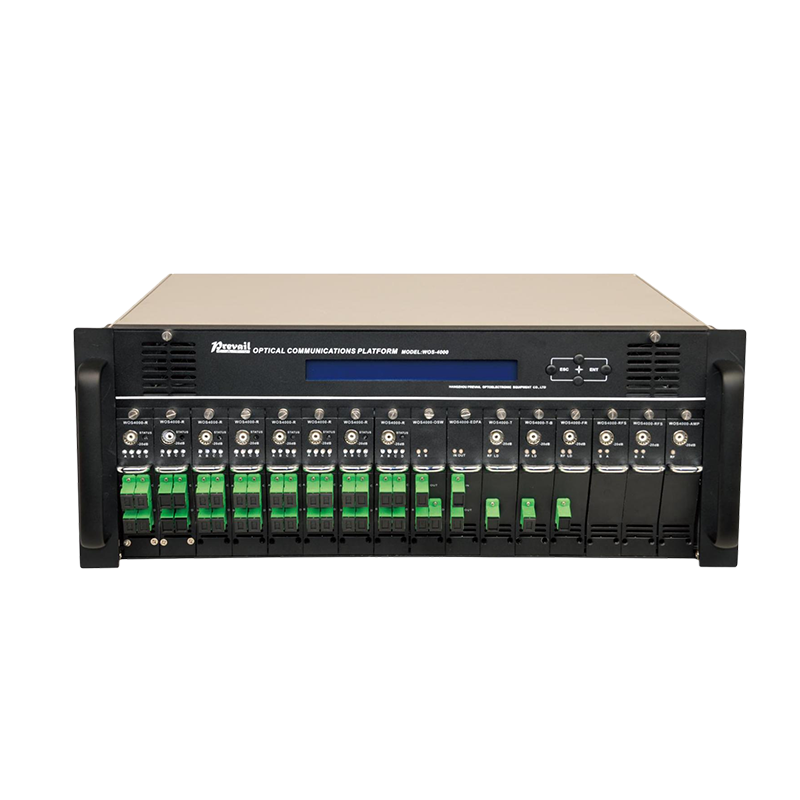How does HFC Transmission Equipment adapt to the current demand for high-definition and ultra-high-definition television program content?
How HFC (Hybrid Fiber-Coaxial) transmission equipment adapts to the current high-definition (HD) and ultra-high-definition video content (UHD) requirements of TV program content involves multiple technical aspects. As video quality continues to improve, HFC transmission equipment needs to be upgraded in terms of bandwidth, data compression, transmission stability, etc. to support the efficient transmission of high-definition (HD) and ultra-high-definition (UHD) video streams.
The increase in HD and UHD video content has put forward higher requirements for bandwidth. Ultra-high-definition video formats such as 4K and 8K usually require higher data transmission rates, far exceeding the requirements of traditional SD (standard definition) and HD (high definition) video. HFC networks respond to bandwidth requirements in the following ways:
HFC networks provide more transmission channels by increasing the frequency bandwidth of coaxial cables. For example, higher frequency carrier signals (such as above 1 GHz) are used to increase the overall transmission capacity of the network.
More efficient modulation techniques (such as QAM modulation) are used to increase the amount of data transmitted per channel. For example, high-order modulation methods such as 256-QAM or 1024-QAM can transmit more data on the same frequency band to meet the needs of HD and UHD video.
In some HFC networks, optical fiber is not only provided to distribution nodes, but can even be directly connected to users, which greatly improves bandwidth and further supports the stable transmission of HD and UHD video.

The bandwidth requirements for HD and UHD video are extremely large, especially the transmission of 4K and 8K content. In order to effectively meet this challenge, HFC equipment uses advanced video encoding and compression technologies to optimize video transmission:
H.265 (High Efficiency Video Coding, HEVC) is a more efficient video compression standard than traditional H.264, which can transmit higher quality images under the same bandwidth conditions. Through HEVC technology, HFC networks can compress HD video content, reduce the required bandwidth, and improve transmission efficiency.
With the gradual popularization of AV1 encoding technology, it provides better compression efficiency than H.265. AV1 is widely used in the compression of UHD video content, which can achieve high-quality video transmission under extremely low bandwidth conditions.
HD and UHD video content requires extremely high signal quality to ensure clear images without stuttering. HFC transmission equipment has made a lot of technical optimizations to improve signal quality:
HFC networks usually use equipment such as fiber amplifiers and coaxial cable amplifiers to ensure that the signal is not lost or attenuated during long-distance transmission, ensuring high-quality transmission of HD video content.
To avoid video quality degradation caused by interference, HFC systems use advanced interference suppression technologies such as automatic gain control (AGC) and bit error rate (BER) monitoring to ensure the stability of video signals.
By increasing the depth of fiber access and reducing the use of coaxial cables, this helps improve the stability of video transmission, especially in HD video transmission with high bandwidth requirements.
HD and UHD video content have extremely high requirements for latency, especially in live and interactive content, where excessive latency will affect user experience. HFC systems reduce latency by:
Reducing latency during signal transmission by optimizing the architecture and signal path of the HFC network. For example, using more efficient network routers and switches to ensure faster signal transmission from source to terminal.
In large-scale deployments, HFC networks may adopt a distributed architecture to reduce latency by placing distribution nodes closer to users, thereby improving the transmission efficiency of high-definition video and live content.
As video content becomes richer and technology continues to develop, HFC transmission equipment needs to support multiple video transmission protocols to be compatible with different video formats and resolutions:
With the rise of OTT (Over-The-Top) video and IPTV, HFC transmission equipment needs to support IP-based video streaming to ensure that users can watch HD and UHD videos in various formats.
These video streaming protocols are particularly important in the case of dynamic adaptive video streaming and unstable network conditions. HFC systems can support these protocols to provide users with a smoother viewing experience.
With the popularization of emerging video technologies such as 8K video and virtual reality (VR), HFC transmission equipment will continue to face higher bandwidth requirements. In the future, HFC systems may be deeply integrated with technologies such as 5G networks and fiber to the home (FTTH) to provide higher bandwidth and lower latency solutions to meet the growing demand for video content.
HFC transmission equipment has successfully adapted to the transmission needs of HD and UHD video content through technological advances in bandwidth expansion, video compression technology, signal enhancement and interference suppression. As video quality continues to improve and network demands increase, the technical updates and optimizations of HFC systems will continue to drive their applications in broadcasting, broadband access, and video surveillance, ensuring that users can be provided with a higher quality and more stable audio-visual experience.

















